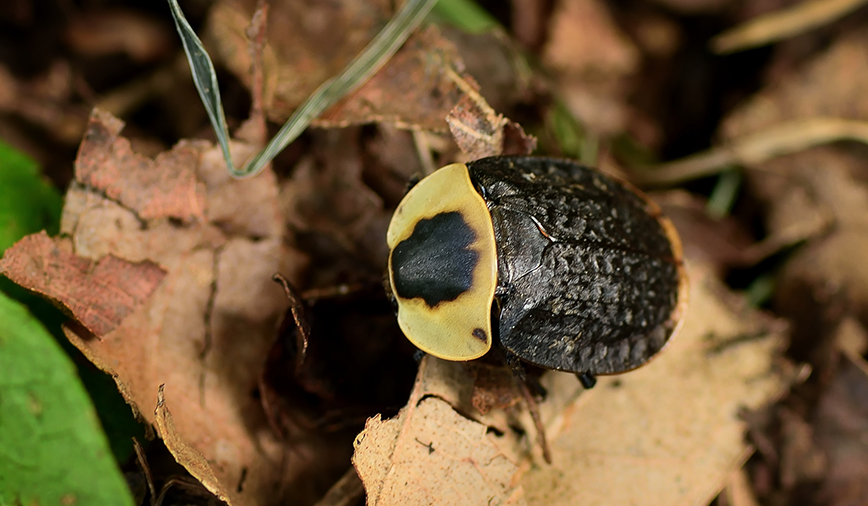Objects in nature, as in life, can be divided into two distinct groups: The things that make you go, “Oooooh!” and the things that make you go “Eeeeew!” This past week, we were lucky enough to encounter both.
The first item, an “ooooh,” appeared last Saturday, that lovely spring day where temperatures climbed into the 60s. I was near the pothole wetlands at Campton Hills Park in St. Charles, reveling in the happy harmonies of spring peepers, chorus frogs and leopard frogs, when a flash of orange caught my eye.
Seeing orange in March in Illinois means either the Illini are doing well in the NCAAs (definitely not the case this year) or that a local butterfly has emerged from hibernation.
In our area, butterflies and moths spend the winter months in one of four stages: egg, larva (caterpillar), pupa (chrysalis or cocoon), or adult. Not many species are programmed to hibernate in this latter stage, a fact that made last Saturday’s sighting an extra-special treat.
As the orange-and-brown creature fluttered past, I squinted to see if I could make a positive i.d. But with a determined breeze blowing, the butterfly wasn’t about to alight and, clad in waders, I wasn’t about to go chasing after it. But if I had to make a guess, I’d go with either a comma or a question mark.
No, we’re not talking punctuation here. Well, maybe we are. The comma butterfly, Polygonia comma, and the question mark butterfly, Polygonia interrogationis, are named for the tiny white marks visible on the underside of their hind wings. Future lepidopterists take note: The comma butterfly’s white marking is comma shaped, while the question mark butterfly’s marking is question-mark shaped. Got that?
Both species have similar coloration, and have distinctive, jagged-edged wings, but—just like the punctuation marks they’re named after—the comma is slightly smaller than the question mark. Which one was at Campton Hills Park? It’s anyone’s guess. Nonetheless, a butterfly in March is a delightful sight to see.
Now for the “eeeew” end of the spectrum. Let’s preface this creature by saying it performs a valuable, though unenviable, service in parks, yards and along roadsides; I’ll even add that it’s a wonderful animal to get to know…if you can stand the stench.
We’re talking now about carrion beetles. A handful of different species live in our area, but the one that came to live on my desk this week is the margined carrion beetle, Oiceoptoma noveboracense. (Note to linguaphiles: My Greek isn’t what it should be, but I do believe Oiceoptoma translates to “dwelling on a corpse,” an apt description for a critter that eats carrion.) A bit smaller than a dime, the little guys are dark, almost black, but near the head have a dash of orange-red along the “margin”—hence the name.
The beetles appeared as part of a gift that just kept getting better. We were packing up Thursday after a burn at Williams Wetlands on St. Charles’ east side, when Lisa O’Brien, a member of our naturalist crew, alertly spotted a wad of fur. Muskrat, it appeared. Better still, the departed’s mostly-decomposed head was nearby. Picking it up for a closer look we discovered, best of all, the beetles, hard at work inside.
Although carrion beetles are often described as being on nature’s recycling team, they might also be candidates for an episode of Extreme Home Makeover: Carcass Edition. Over a period of days these industrious insects move into a dead animal and quickly convert it into temporary living quarters complete with large dining areas and of course a nursery for their soon-to-arrive offspring.
Sometimes the beetles are lucky enough to have help from their buddies, the phoretic mites. Phoresy is a relationship whereby one non-parasitic organism (in this case the mites) hitches a ride on another (the beetles), creating mutual benefit for both. The mites cling to the back and abdomen of the beetles and, when the destination of a dead animal is reached, they debark and go to work, eating fly eggs and larvae that would otherwise compete with the beetles for food.
I’ve always been curious about the life cycle of carrion beetles, and took Thursday’s opportunity to bring them, along with their muskrat motel, back to the office for further observation. They’re set up, for now, in a big pickle jar on my desk. Whenever I take the lid off, an aura of dead rodent penetrates the air—admittedly, an “eeeew.” But the important work of these beetles is—at least for this naturalist—an extraordinary “Ooooh!”
Pam Otto is the manager of nature programs and interpretive services for the St. Charles Park District. She can be reached at potto@stcparks.org or 630-513-4346.

